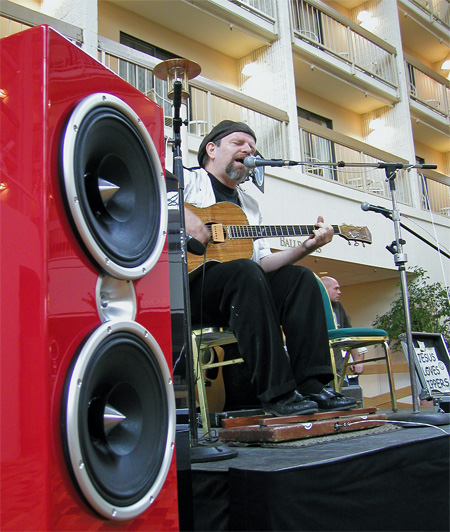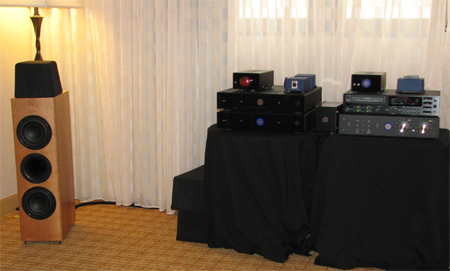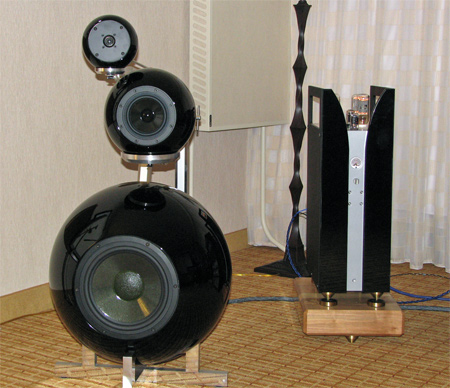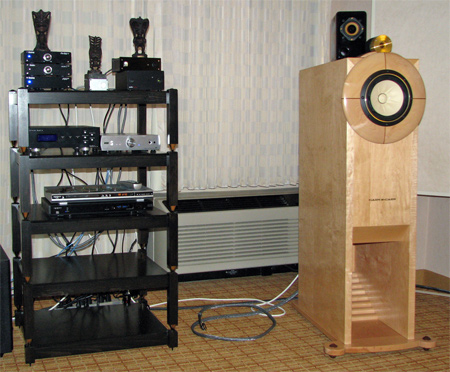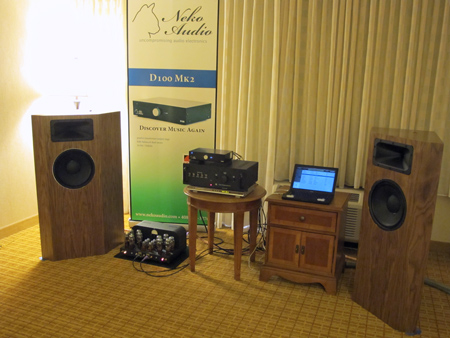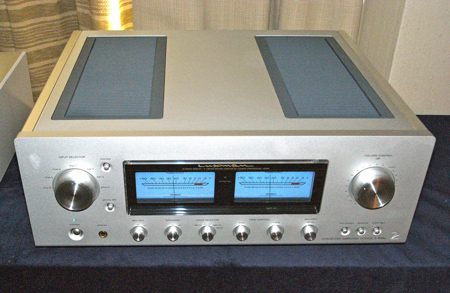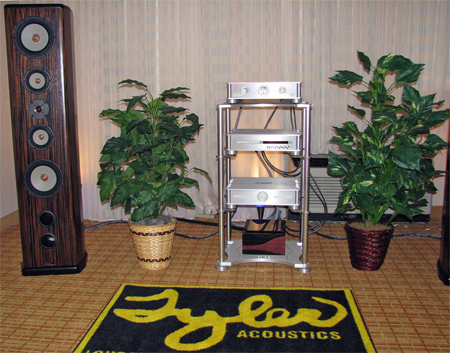
The sweet solidity of the violin beckoned me from down the hallway (which is far more than I can say about some of the rooms I visited). I was hardly surprised to discover that I had been lured by Edge Electronics. Paired with the Tyler Acoustics Woodmere II speakers ($8800 base price, 185 lbs each), the Edge System handled silences wonderfully. That may sound like a backhanded compliment, but I mean anything but. Playing the exquisite Elly Ameling singing Schubert to piano accompaniment, there was a stillness, poise, and grace amidst the living flow of her voice that I rarely experience from sound systems. (I experienced something similar one year in the Joule/Elrod room at CES). On display were the new Edge CD player, whose RAM circuitry is said to perform advance error correction, the G8 amp, and G2 preamp (available with optional battery supply). Actually, passive display was not what was intended. Shipping mishaps from the company's new base in Florida had actually destroyed some of the intended components, which were replaced by older versions of Edge's current models, which Steve Norber lifted from his home system a few miles away.

